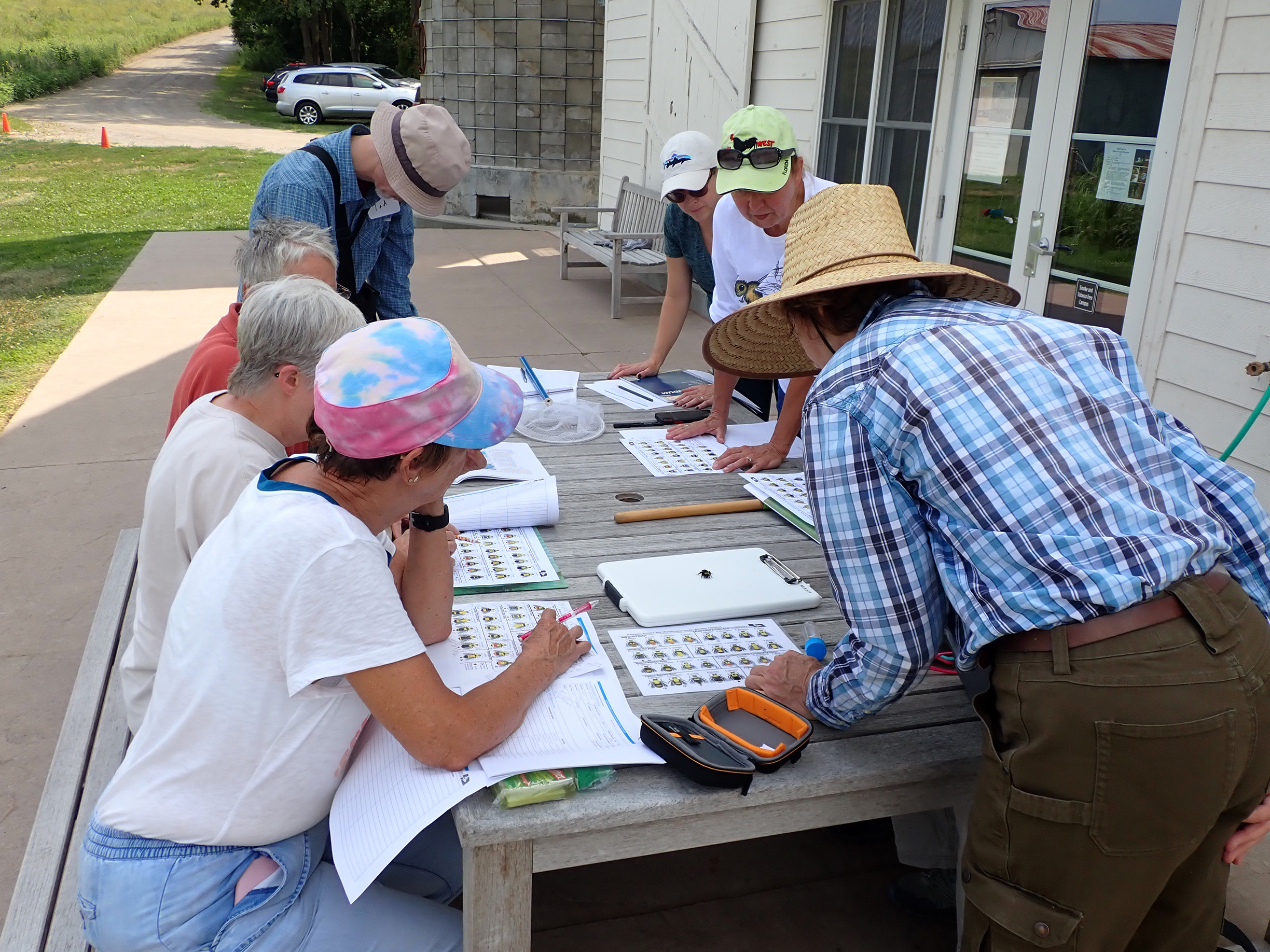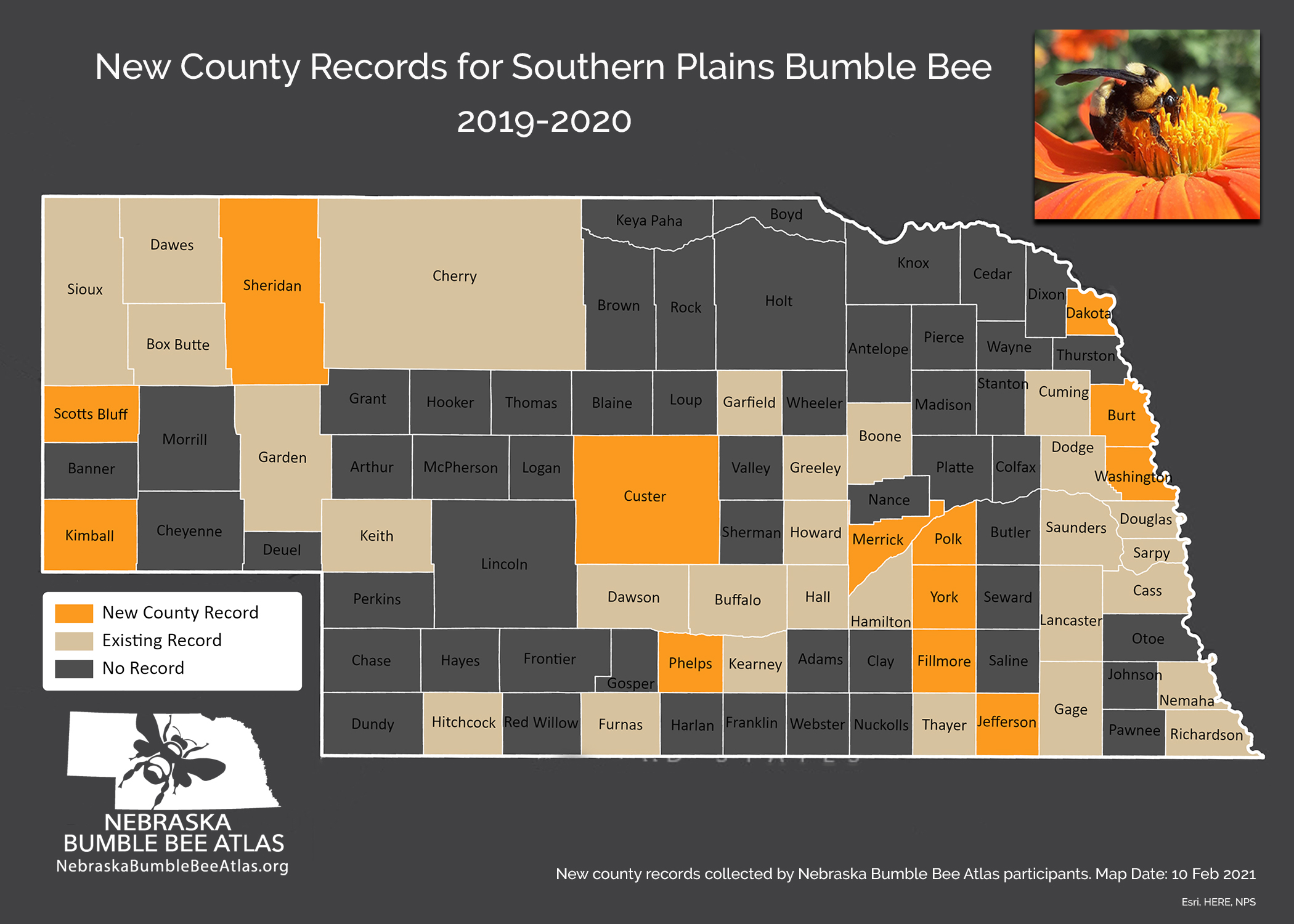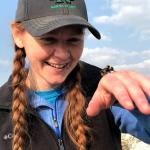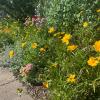With the arrival of spring, many of us have been eager to get outside and enjoy the weather. I, for one, always seem to keep my eyes scanning for signs of new plant growth, be it new shoots bursting through the soil, an old pine putting out its new soft and waxy needles, or—perhaps my favorite spring event—stumbling upon colorful flowers in bloom. There is just something so refreshing about seeing flowers for the first time after a long winter. So, I get my phone out and take a few pictures of the beautiful blooms. Sound relatable?
Little did you know that those nature photos sitting in your camera roll could be advancing our understanding of nature through community science (also known by some organizations as citizen science).

Community scientist uses the iNaturalist app on her phone to help identify flowers while on a hike. The photographs will be recorded on iNaturalist and contribute to the understanding of local flora. (Photo: Katie Lamke.)
If you are familiar with our work at Xerces, you have likely heard of (or participate in) community science through Bumble Bee Watch (and our bumble bee atlas projects), the Western Monarch Thanksgiving Count, or the Western Monarch Milkweed Mapper. The foundation of these projects is people like you, volunteers who generously give their time to contribute to scientific research. For example, bumble bee atlas volunteers conduct surveys independently, submit their findings, and we use that information to improve the ways we conserve bumble bees. For most projects, no experience is required to participate; in fact, many projects provide training to equip volunteers with any necessary skills or knowledge.
April is the perfect time to get involved in a project because it is Citizen Science Month! This initiative is a collaborative effort between SciStarter, the National Library of Medicine, Arizona State University, the Citizen Science Association, Science Friday, National Geographic, and
Whether you are looking to join a project for the first time or you’re an experienced volunteer, SciStarter has made it easier than ever to help find a project of interest. Using the Project Finder, you can search based on your location, a topic of interest—like “pollinators”—an age group, or indoor or outdoor activities. Another handy function is being able to search for projects based on the type of activity you’ll be engaged in, such as in the car, at school, in the rain, at the beach, on a hike, and many more options that help narrow down your choices.
Participating in community science can be a rewarding experience. With such a wide variety of topics to choose from, there is bound to be one that ignites your curiosity. Some folks are motivated to join a project because it is centered around a topic they are passionate about or it is an opportunity to gain or improve technical skills, gather new knowledge, or meet a group of like-minded individuals.

Community scientists attending a training for the Nebraska Bumble Bee Atlas learn how to identify bumble bees before conducting surveys on their own. Many community science projects offer workshops that provide any necessary skills or knowledge needed to participate. (Photo: Xerces Society / Katie Lamke.)
While each project varies in the level of time commitment or types of tasks, all of them are advancing science. An easy way to participate is by using platforms like iNaturalist to submit your nature observations. These photo submissions help researchers keep tabs on the organism(s) you observed and the app itself helps you learn more about what you find. In addition to general observations, iNaturalist also has focused projects that you can join. For example, the Xerces-run Western Monarch Milkweed Mapper uses iNaturalist so that people can submit photos of monarch butterflies or milkweed to help our conservation biologists better understand the needs of monarchs.
Of increasing popularity are targeted events like a bioblitz, such as the City Nature Challenge where 200+ cities race against each other to observe as many species as possible between April 30 and May 3, 2021. These targeted efforts provide an important snapshot in time and improve our understanding of the animals and plants present in urban areas. Xerces staff in Nebraska are helping with the Lincoln City Nature Challenge. Check out the City Nature Challenge map to see if your city is participating!
 In the last two years, Nebraska Bumble Bee Atlas participants have added observations of the southern plains bumble bee (Bombus fraternus) in thirteen counties where it had not previously been recorded, significantly increasing our understanding of this imperiled species! The inset image of the southern plains bumble bee was submitted by community scientist Kellie Hayden. If you're in (or near) Nebraska, you can join the atlas project, but if you're anywhere in the U.S. or Canada, you can participate in Bumble Bee Watch.
In the last two years, Nebraska Bumble Bee Atlas participants have added observations of the southern plains bumble bee (Bombus fraternus) in thirteen counties where it had not previously been recorded, significantly increasing our understanding of this imperiled species! The inset image of the southern plains bumble bee was submitted by community scientist Kellie Hayden. If you're in (or near) Nebraska, you can join the atlas project, but if you're anywhere in the U.S. or Canada, you can participate in Bumble Bee Watch.
Other community science projects require more time investment, like our bumble bee atlas projects. People that sign up to participate in an atlas first attend an educational workshop (or use online training materials) to learn the ins and outs of bumble bees and how to conduct a survey, like ways to net and photograph bumble bees. Trained participants then disperse throughout their state, conduct bumble bee surveys, and report back to us what they have found. These efforts are providing information on bumble bee communities never before available to researchers. For instance, Nebraska Bumble Bee Atlas participants have observed the southern plains bumble bee (Bombus fraternus) in thirteen counties where it had not been previously observed! With a better understanding of the distribution of this imperiled species, scientists and land managers are better equipped to effectively support it.
So the next time you find yourself in an impromptu photoshoot appreciating that magnificent monarch, fuzzy bumble bee, or fabulous milkweed, consider taking it a step further by adding your find to a community science project. Chances are, you’ll contribute to conservation and learn more about your surroundings in the process.
Learn More
Find a Xerces Society community science project, including, Western Monarch Milkweed Mapper, Bumble Bee Watch, and regional bumble bee atlas projects covering California, Missouri, Nebraska, and the Pacific Northwest.
Find other projects on iNaturalist, SciStarter Project Finder, and SciStarter Events.




